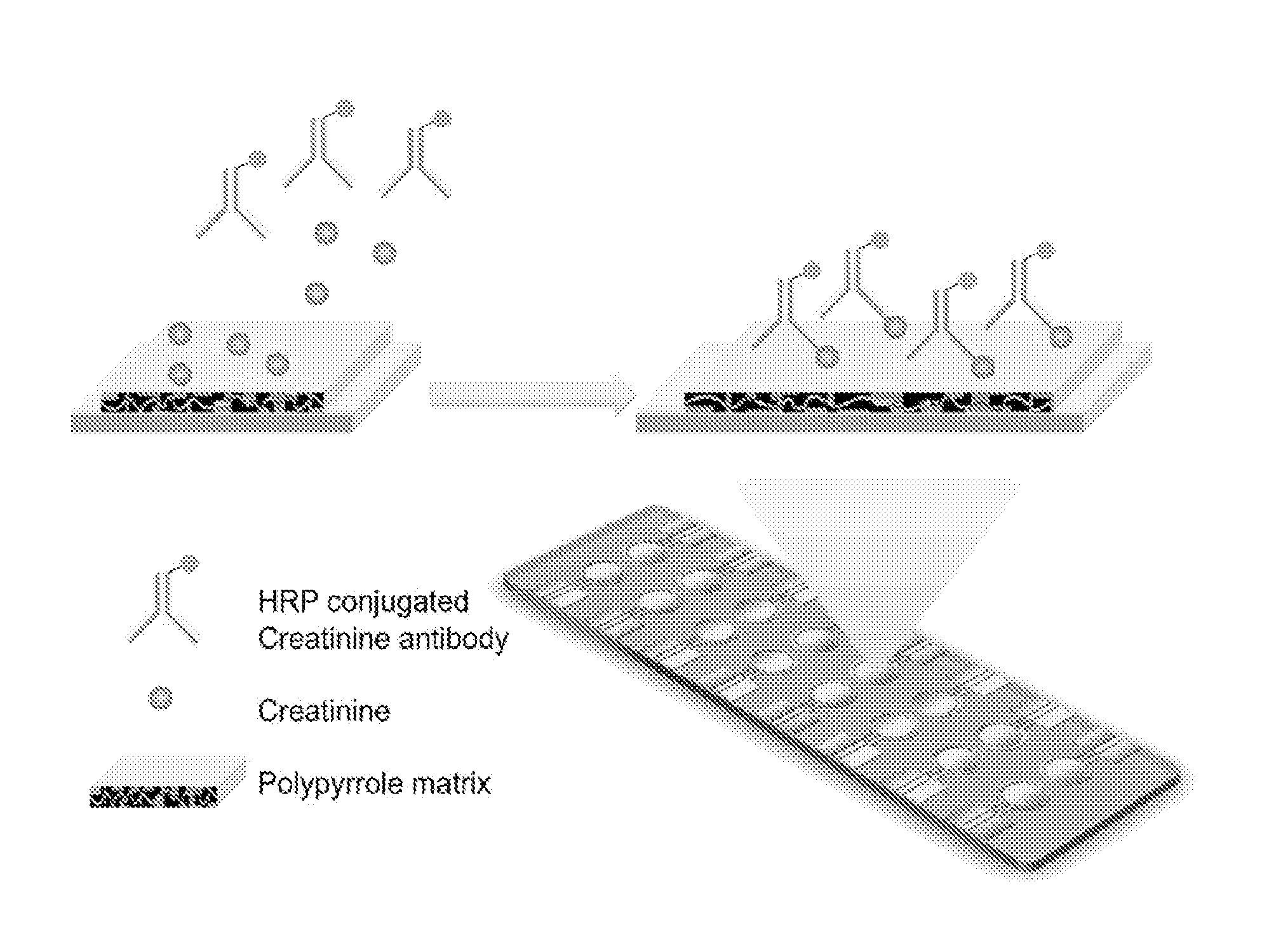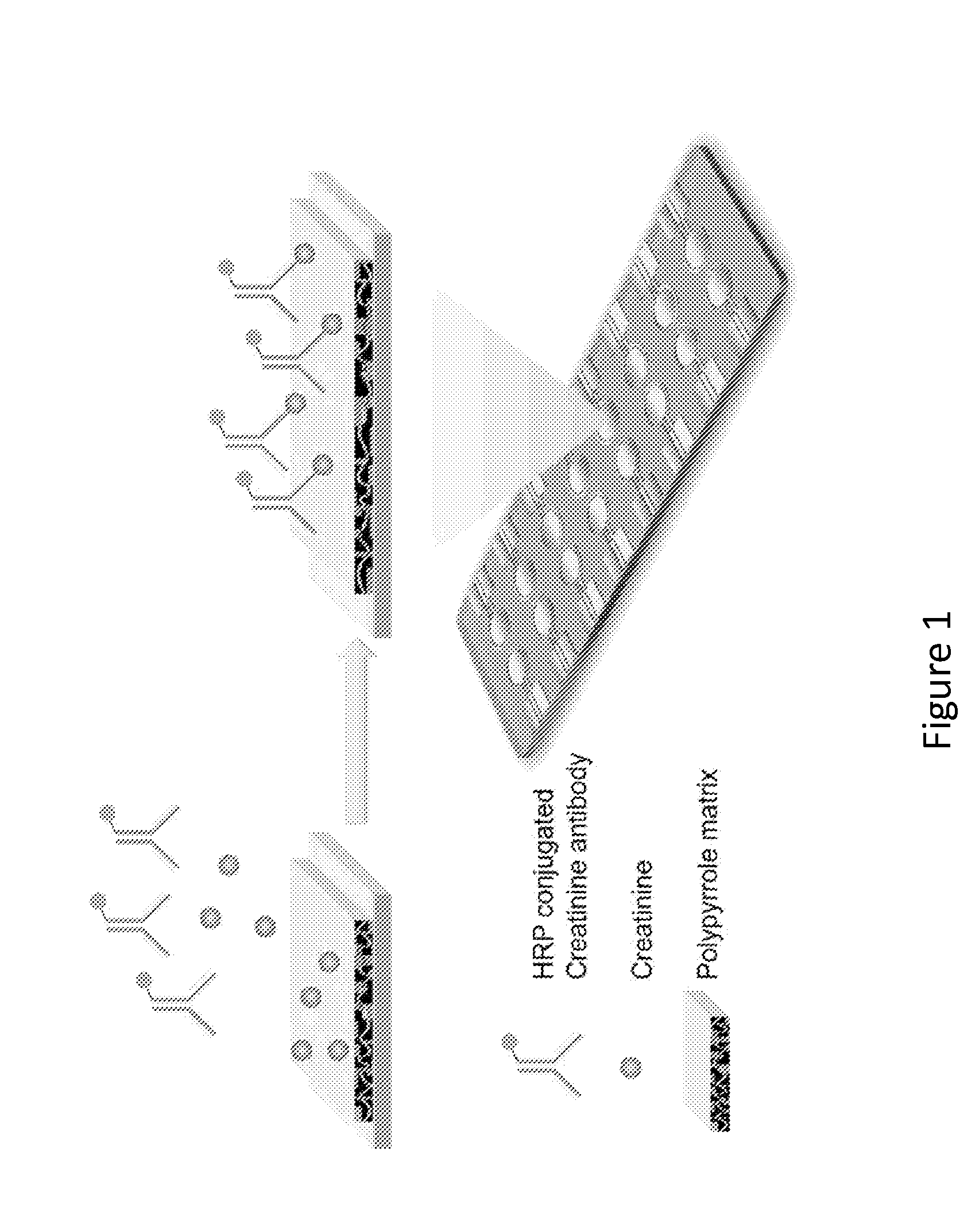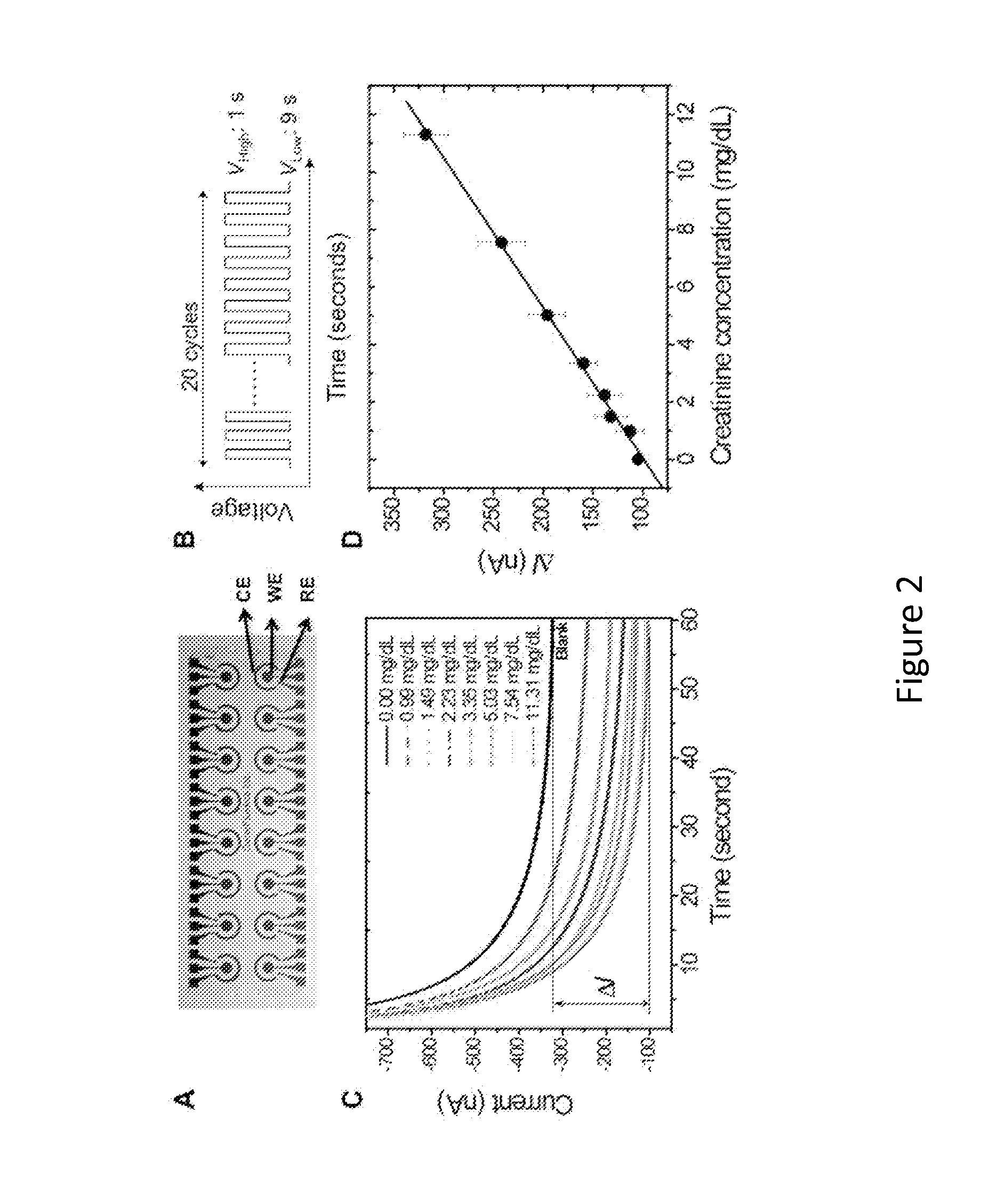Point-of-Care Device for Monitoring Renal Function
- Summary
- Abstract
- Description
- Claims
- Application Information
AI Technical Summary
Benefits of technology
Problems solved by technology
Method used
Image
Examples
experimental examples
[0062]The invention is now described with reference to the following Examples. These Examples are provided for the purpose of illustration only and the invention should in no way be construed as being limited to these Examples, but rather should be construed to encompass any and all variations which become evident as a result of the teaching provided herein.
[0063]Without further description, it is believed that one of ordinary skill in the art can, using the preceding description and the following illustrative examples, make and utilize the present invention and practice the claimed methods. The following working examples therefore, specifically point out embodiments of the present invention, and are not to be construed as limiting in any way the remainder of the disclosure.
example 1
Creatine Detection from Whole Blood
[0064]Freshly collected whole blood samples from renal transplant recipients were obtained under the auspices of an ongoing UCLA IRB for immune monitoring. Patient specimens were assigned a numeric code to remove any identification. Nineteen (19) blood samples were utilized for this study. All samples were run in triplicate to assess experimental precision and human error variance.
Traditional Laboratory Assay for Creatinine Comparison Measurement
[0065]For this diagnostic validation, the creatinine levels were measured via a modified Jaffe reaction. Creatinine in the blood samples reacted with alkaline picrate and generated orange-red color products. The signal readouts were based on the spectra from the orange-read color products. All automated creatinine tests had been run on the Olympus 5400 (Olympus Diagnostic Systems) calorimetric assay. This was conducted by the routine diagnostic flow at the UCLA Ronald Reagan Medical Center ...
example 2
Multiplexing ESensor
[0079]The multiplexing electrochemical sensor is based on the simultaneous detection of different types of renal function markers. In this example, the combination of creatinine and cystatin-C is provided. Creatinine is a small chemical, and the detection is a competitive amperometric measurement. Cystatin-C detection is performed via a sandwich protein detection assay, as shown schematically in FIG. 4.
Multiplexing Measurements for Different Types of Molecules
[0080]Conducting polymer (CP) has been applied in this rapid and simple procedure. By applying the co-polymerization with polymer matrix, different types of capture molecules can be directly embedded simultaneously onto the surface of the same chip. The total reaction time is from several seconds to minutes, at room temperature with regular biocompatible buffer.
[0081]A three-electrode system has been utilized in this assay. Each unit of the array has a working electrode, a counter electrode, and a reference ...
PUM
| Property | Measurement | Unit |
|---|---|---|
| Current | aaaaa | aaaaa |
| Electrical conductor | aaaaa | aaaaa |
| Electric field | aaaaa | aaaaa |
Abstract
Description
Claims
Application Information
 Login to View More
Login to View More - R&D
- Intellectual Property
- Life Sciences
- Materials
- Tech Scout
- Unparalleled Data Quality
- Higher Quality Content
- 60% Fewer Hallucinations
Browse by: Latest US Patents, China's latest patents, Technical Efficacy Thesaurus, Application Domain, Technology Topic, Popular Technical Reports.
© 2025 PatSnap. All rights reserved.Legal|Privacy policy|Modern Slavery Act Transparency Statement|Sitemap|About US| Contact US: help@patsnap.com



